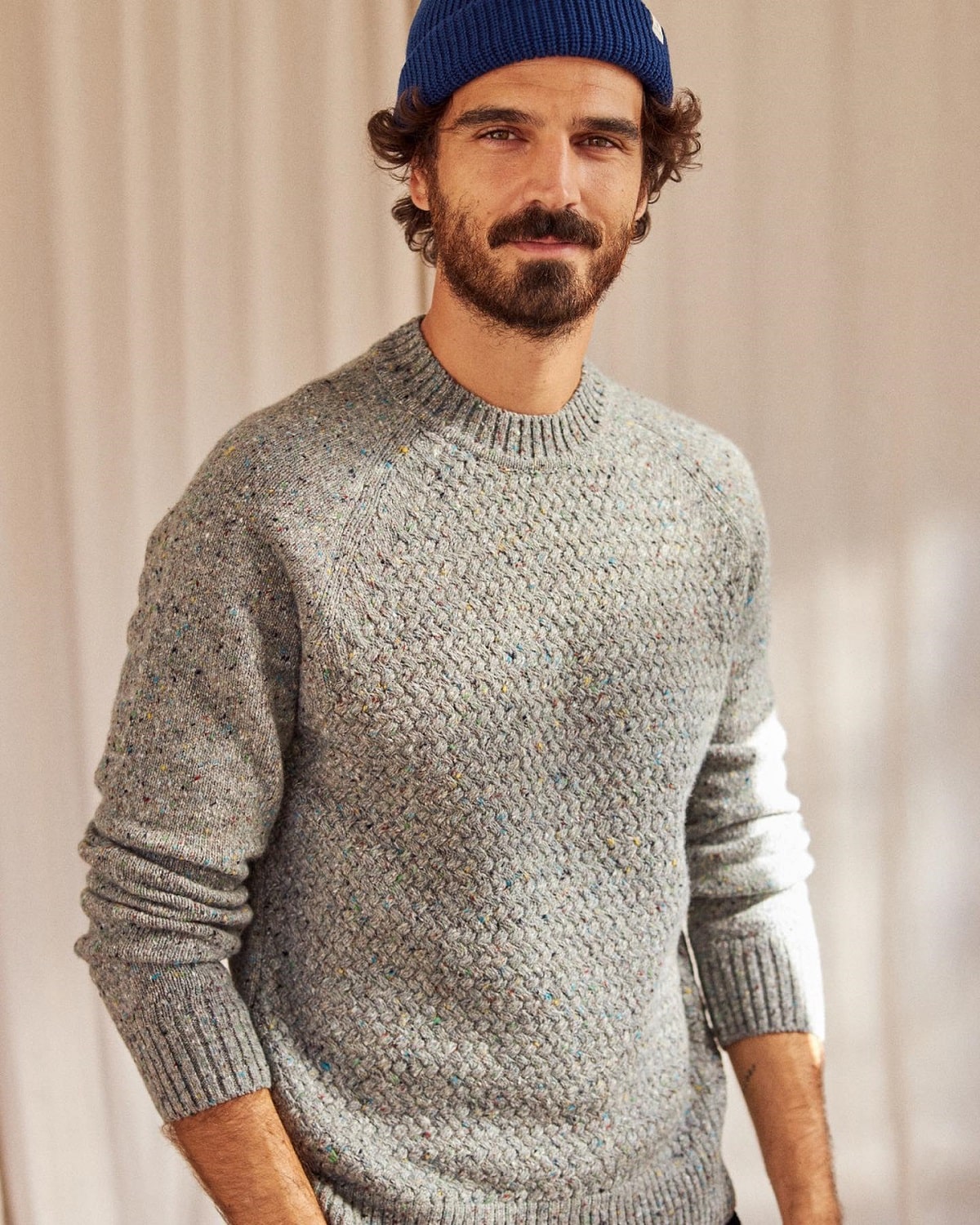1
HOME > Trends >
WHAT DOES SLOW FASHION LOOK LIKE?
Written by Ivan Yaskey in Trends on the 5th December 2022

Holiday seasons in recent years have included one additional, albeit somewhat contradictory, message: Buy less. This applies to the food for your guests to the gifts you give to how and with what you decorate your home. Yet, pulling back from consumerism isn’t just a holiday trend. Rather, this approach runs through the foundation of the slow fashion movement, itself an amalgamation of sustainability and ethical principles. The goal, here, is to question what you purchase – avoid buying things mindlessly or based on trends and to, instead, look for items that are locally and sustainably made that provide a longer lifespan. Especially with the two-season collection model coming into question and being superseded by seasonless, as-they-come collections, understand more about what constitutes “slow” fashion:
The Principles and Foundation of Slow Fashion
It’s all in the name, at least at a glance. Slow fashion’s more conscious course provides an alternative, although not entirely an antidote, to fast and ultra-fast fashion, which started picking up pace in the 1990s. In stores and through emails, we see fashion as a constant stream of new collections. But, studies have shown that 75 percent of materials involved in the creation of fashion end up in landfills. This is after the industry, as a whole, contributes to about a fifth of all global water pollution and up to 10 percent of all carbon emissions. As ancient as it seems now, the phrase “slow fashion” emerged back in 2007, coined by Centre for Sustainable Fashion’s Kate Fletcher. Fletcher based the term on the slow food movement taking off in Italy – itself initiated to counteract fast food’s culture-free offerings and lack of sustainability compared to locally grown ingredients. Fletcher’s slow fashion stood on a similar foundation: quality over convenience and slower, more sustainable production. 15 years later, these principles still feel aspirational. They’ve also become more diverse as supply chains become increasingly more complex and less transparent. But, just as with food, you should know – or attempt to find out – where your clothes are coming from. Drawing from sustainable and ethical fashion yet presenting a specifically anti-consumerist stance, slow fashion rests upon the following:

Rethinking our relationship with clothing and shopping in general: This is an instance of asking yourself, “Do I really need that?”, questioning every purchase’s origins and construction, and evaluating how often you’ll use something. Here, the goal is to emphasize quality, transparency, safe working environments, and fair wages above quantity. In thinking about brands, this looks like consistent capsule and classic offerings and the occasional small-batch collection.
Creation and repair: Menswear, in varying degrees, has attempted to highlight the craft behind a garment – even if this does go in a hokey heritage direction at points. Slow fashion continues from here, encouraging us to learn more about how items are created, to create them ourselves, and to reduce waste in the process. In this direction, repairing what you own is preferred to simply buying something new, with the goal of getting it to last your lifetime, instead of ending up in a landfill. Things that can’t be repaired should be recycled or reused.
Attention to pollution: Pollution from fashion starts with how fabrics are made – be it synthetics or the environmentally damaging chemical processing required to make viscose, a fabric sourced from wood pulp. Conscious, well-researched choices frequently start from the garment’s materials. Organic cotton, linen, wool, hemp, less-processed bamboo, and Tencel have less of an impact and tend to last longer than synthetics.
A smaller supply chain: This entails fewer entities for creating a piece of clothing. Ideally, everything is done in house and locally, with goods shipped directly from the manufacturer. Today, supply chains start from dyes and fabrics and encompass fasteners before the garment is even stitched together. This process spans several countries across the globe – and that’s even before the order is shipped to the brand’s warehouse or store.
Ultimately, these aspects help reduce the fashion industry’s carbon footprint, reduce the amount of pollution, and correlate with more ethical labor practices.

Taking a Slower Approach to Fashion
Right now, you know not to follow the hype – be it responding to every drop, collection, or best-of roundup. Building from here:
Do Your Research
Unfortunately, this is easier said than done. Before you purchase something, be sure to:
- Understand where and how it’s being made, and who’s making your garment.
- Explore the waste process behind the garment.
- Learn more about working conditions along the supply chain – from fabric construction to warehousing.
- Learn more about the materials, including if the fabric is organic, the dyes going into it, and if it has any synthetic components. Here, single materials – organic cotton or linen – are preferred to a blend.
- Become familiar with how common materials like cotton, linen, wool, and bamboo are made.
- Determine how much of their collection stems from a sustainable approach: One-off collections using organic cotton or bamboo are a common greenwashing tactic.
- See how often they release new collections. A site with a steady stream of items embodies fast fashion.
- Look up key certifications, including Fair Trade, USDA Organic, or B Corp Certification, for starters.
Get Familiar with Materials
The 20th and 21st centuries brought multiple innovations in terms of how clothing is crafted and how it performs. Performance qualities are one of them: While waterproof and moisture-wicking treatments help keep you dry and control sweat, they’re also behind the release of PFAS, or “forever chemicals,” into our environment. These join the synthetic fibers and subsequent microplastics from polyester, nylon, acrylic, spandex, and rayon, as well as the dyes used to colour garments. While blended fabrics offer some convenience, in terms of ironing and not absorbing perspiration, these attributes seem less and less advantageous in a sustainable-focused present. Instead, pure, unblended linen, organic cotton, wool, Tencel, and hemp require fewer pesticides to grow and won’t shed microplastics when you do the wash.

Shop Secondhand (or Rent)
The internet has helped the secondhand market grow and lose the stigma of being inferior to something new. In terms of slow fashion, secondhand – that is, vintage, consignment, thrifted, deadstock, pre-owned, or upcycled – should be your first stop: It’s better to purchase something already out there than to have something new created. This approach helps keep fewer objects and textiles out of landfills. As well, consider participating in rental or box programs that allow you to wear something a few times before ultimately passing it along to something else or to try before you buy without having your return destined for a landfill.
Calculate Cost Per Wear
A report from the Ellen MacArthur Foundation found that clothing production has doubled since the year 2000. Within this picture, we own and throw away more clothing, and wear items fewer times than we used to. Also, even with brands like H&M promising to recycle returned clothing, only one percent of this amount ever gets reused. As such, taking a slower approach to fashion means wearing what you own:
- Aim to wear something at least 30 times – preferably longer.
- Don’t depend on donations: Instead, only donate your clothing – or, better yet, put it up on a resale platform – after you’ve owned it for a couple of years.
- Routinely evaluate your closet, in terms of what you own, how much you wear each item, and alternatives for older garments you wear less frequently.
- Avoid a trend-based approach: Instead, seek out items that, style wise, will be relevant for a few years.
- Know how to repair your garments when they show wear.
- Explore alternatives rather than throwing away old, worn clothing: Sustainability campaigns encourage reusing them as cleaning rags or packing materials.
- Limit how frequently you shop, and what you buy during each “haul.” Especially for online shopping, put items aside, and re-evaluate your interest before you buy.
- Aim for high-quality newer purchases (whether new or secondhand), and divide the cost by 30 to understand their long-term value

Shift Toward Year-Round Styling
Roundups on transitional fashion should give you enough ideas. Instead of having strict seasonal wardrobes, get in the habit of layering what you own, and adjusting it to the weather. Ideally, you should be able to wear each garment you own for a minimum of eight months per year, save for swim trunks and your winter coat. In this direction, base the majority of your wardrobe on neutral and cool tones that can be paired in various combinations without feeling boring.
Approach Influencers and Content Discerningly
This is like old-school advertising: Don’t believe everything you see. As well, especially through the internet’s constant bombardment, we’re always getting exposed to something new. To limit your intake:
- Be selective about accounts you subscribe to on social media.
- Understand that the majority of clothing you see often comes from a paid-for-placement arrangement.
- Unsubscribe from brands’ newsletters and other updates.
- Should a trend interest you, attempt to source it secondhand, or research its construction before you buy.

Take Care of Your Clothing and Accessories
Keeping what you own looking sharp ultimately results in longer wear. Here:
- Be mindful about how you wash your clothing: Separate your clothing ahead of time, do larger loads, consider a bag or filter for catching microplastics, turn your clothing inside out before you put it into the machine, and line dry it after.
- Be careful to avoid stains and tears.
- Sew and repair before discarding something.
- Purchase hangers and shoe trees to help preserve shape.
- Limit dry cleaning.
- Get in the habit of brushing your suits, rather than washing them after every wear.
- Wear clothing multiple times before washing.
"Slow fashion is a movement in the fashion industry that promotes the creation of clothing and accessories in a more sustainable and ethical way. Slow fashion emphasizes quality over quantity, and encourages the use of environmentally-friendly materials and production processes. This approach to fashion is meant to counter the fast fashion industry, which is known for producing a large volume of cheap, poorly-made clothing that often ends up in landfills. By contrast, slow fashion encourages consumers to buy fewer, higher-quality items that will last longer and reduce their environmental impact."

Trending
2
3
4
5
6
7
8
9
10










